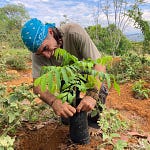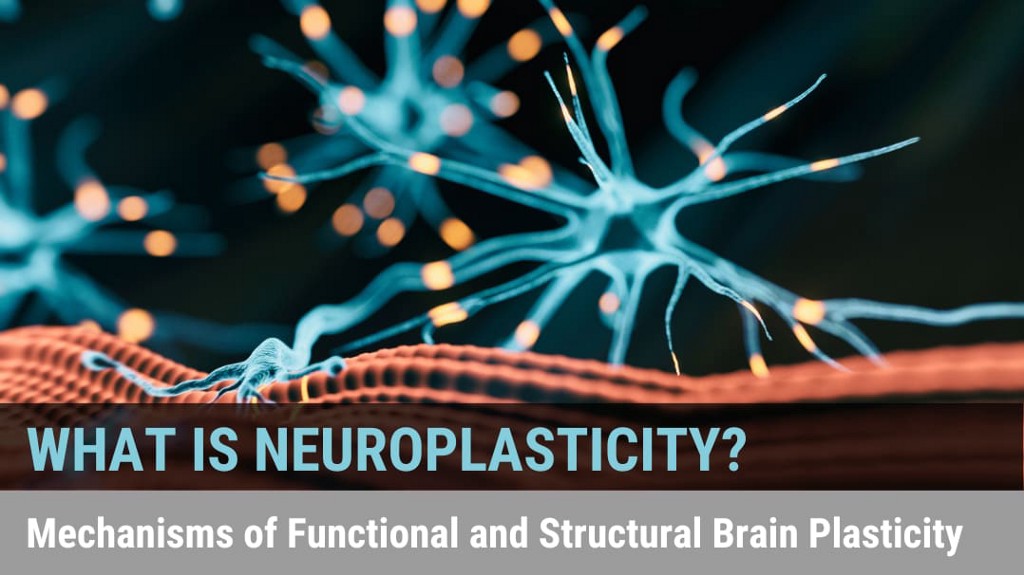
By: The Posts Author | Posted on: 4 Jun 24
This is an essay written on June 1, 2018 when I was the director for the Center for Applied Cultural Evolution I am reposting it as part of the original 3-part series from that time. Find Part 2 here and Part 3 here.Let me start by saying that literally every social problem humanity now confronts will benefit from taking a rigorous, evidence-based approach to developing interventions that work. If I believe this — you might wonder — why would I title an article this way?The answer is simply that I have been trying to manifest into the world a science of large-scale social change for 18
This is an essay written on June 1, 2018 when I was the director for the Center for Applied Cultural Evolution I am reposting it as part of the original 3-part series from that time. Find Part 2 here and Part 3 here.Let me start by saying that literally every social problem humanity now confronts will benefit from taking a rigorous,

By: The Posts Author | Posted on: 2 Feb 24
https://medium.com/media/fcbb0ba19b322ecabd62fa286edeae7a/hrefThis is a very special conversation that I had with Dr. Dan Longboat of the Turtle Clan in the Mohawk Nation. Together we explored “finding the third way” that brings together the best of indigenous knowledge with the best of Western culture.Please watch and reflect on the wisdom that Dan brings to this discussion. Also please share the video with anyone who might find value in it. This was a conversation that helped shape the creation of the 7 Generation Bioregional Earth Summit and is part of the work that Brian Puppa and Susan Bosak are doing at the Legacy Project.I highly
https://medium.com/media/fcbb0ba19b322ecabd62fa286edeae7a/hrefThis is a very special conversation that I had with Dr. Dan Longboat of the Turtle Clan in the Mohawk Nation. Together we explored “finding the third way” that brings together the best of indigenous knowledge with the best of Western culture.Please watch and reflect on the wisdom that Dan brings to this discussion. Also please share the video with anyone

By: The Posts Author | Posted on: 6 Dec 23
Senescence is a term that derives from the Latin word senex, meaning senior or of old age. The word senescence is often used to refer to biological aging and the deterioration that comes with getting older. It takes this meaning when it is used to refer to a whole organism-organismal senescence. But senescence is also a process that occurs at the cellular level.Cellular senescence is a physiological process through which, in response to stress, cells stop dividing but don’t die. Instead, senescent cells linger indefinitely, interfering with normal tissue function. Cellular senescence is one of the main contributors to the aging
Senescence is a term that derives from the Latin word senex, meaning senior or of old age. The word senescence is often used to refer to biological aging and the deterioration that comes with getting older. It takes this meaning when it is used to refer to a whole organism-organismal senescence. But senescence is also a process that occurs at

By: The Posts Author | Posted on: 3 Oct 23
What are Zombie Cells?Zombie cells are damaged cells that have stopped dividing but refuse to die, also known as senescent cells. Senescence is a stress response characterized by the production of chemical mediators that influence tissue health. Senescent cells that resist elimination by the immune system linger in tissues and gradually accumulate, promoting tissue dysfunction, unhealthy aging, and age-related health decline [1,2].Cells become senescent in response to different types of stress, ranging from environmental insults to mitochondrial dysfunction, DNA damage, oxidative stress, or telomere shortening, among others. Despite accumulating damage, they linger (akin to how Zombies refuse to die in books, TV
What are Zombie Cells?Zombie cells are damaged cells that have stopped dividing but refuse to die, also known as senescent cells. Senescence is a stress response characterized by the production of chemical mediators that influence tissue health. Senescent cells that resist elimination by the immune system linger in tissues and gradually accumulate, promoting tissue dysfunction, unhealthy aging, and age-related health decline [1,2].Cells

By: The Posts Author | Posted on: 3 Nov 22
Senescence in Skin Aging — How Qualia Senolytic May Support Skin YouthfulnessWhat is Cellular Senescence?Cellular senescence is a state of irreversible growth arrest that turns functional cells into “zombie cells”-cells that are unable to divide and proliferate, but also resistant to cell death. Senescence changes cells’ characteristics, functions, and the set of molecules they secrete. Molecules released by senescent cells are collectively known as the senescence-associated secretory phenotype (SASP) and include cytokines, chemokines, matrix metalloproteinases (MMPs) and growth factors, for example. These mediators can modulate the activity of surrounding cells and influence tissue function and health [1,2].In normal conditions, senescence can be triggered
Senescence in Skin Aging — How Qualia Senolytic May Support Skin YouthfulnessWhat is Cellular Senescence?Cellular senescence is a state of irreversible growth arrest that turns functional cells into “zombie cells”-cells that are unable to divide and proliferate, but also resistant to cell death. Senescence changes cells’ characteristics, functions, and the set of molecules they secrete. Molecules released by senescent cells are collectively

By: The Posts Author | Posted on: 18 Jul 22
One of the most remarkable properties of the brain is its capacity to adapt at a functional and structural level in response to our environment and life experiences-it’s what allows us to learn, create memories, acquire skills, and adjust our behavior. This malleability of the brain is known as neuroplasticity or brain plasticity.Until recently, it was believed that it was mostly at a functional level-through synaptic plasticity-that the adult brain could change. But the development and refinement of brain imaging technology has indicated that neuronal networks in the adult brain retain the ability to structurally remodel their connectivity-through synaptic remodeling
One of the most remarkable properties of the brain is its capacity to adapt at a functional and structural level in response to our environment and life experiences-it’s what allows us to learn, create memories, acquire skills, and adjust our behavior. This malleability of the brain is known as neuroplasticity or brain plasticity.Until recently, it was believed that it was

By: The Posts Author | Posted on: 16 Jun 22
A cognitively rich and physically active lifestyle can be very beneficial for brain health and cognitive performance. Underlying these effects is one of the most important properties of the brain: brain plasticity, or neuroplasticity, is the brain’s capacity to adapt based on life experiences and it’s what allows us to learn and become more skilled with practice.Brain plasticity acts at a functional level by adjusting the functional properties of existing neurons and synapses through molecular changes, and at a structural level through changes in neuronal morphology, neuronal connections, glial cells, and other dynamic adjustments in cellular structures. To learn about
A cognitively rich and physically active lifestyle can be very beneficial for brain health and cognitive performance. Underlying these effects is one of the most important properties of the brain: brain plasticity, or neuroplasticity, is the brain’s capacity to adapt based on life experiences and it’s what allows us to learn and become more skilled with practice.Brain plasticity acts at

By: The Posts Author | Posted on: 26 Apr 22
The term ‘hacker’ has its origins in computer programming subcultures from the ’60s, and was used to describe people who wanted to take on hard problems in a spirit of playful exploration and a resistance to ‘unearned’ authority. Although the methods, means and intentions of hackers varied widely, all seemed to share a unique ethos that mixed a deep commitment to individual autonomy and agency with an equally deep commitment to collaboration and co-creation.Over time, the concept of hacking has traveled far from its origins, finding its way into a number of domains like Biohacking, Consciousness Hacking, Flow Hacking and
The term ‘hacker’ has its origins in computer programming subcultures from the ’60s, and was used to describe people who wanted to take on hard problems in a spirit of playful exploration and a resistance to ‘unearned’ authority. Although the methods, means and intentions of hackers varied widely, all seemed to share a unique ethos that mixed a deep commitment

By: The Posts Author | Posted on: 28 Mar 22
“That which does not kill us, makes us stronger.” It turns out Nietzsche was right, at least when it comes to our adaptive stress response. Our bodies thrive on short-term acute “stress” exposure by ramping up growth and repair. This process, known as hormesis, may have powerful health and longevity benefits.*What is Hormesis?In the fields of biology and medicine, hormesis is defined as an adaptive response of cells and organisms to a moderate (usually intermittent) stress. Low levels of controlled stress stimulate or upregulate existing cellular and molecular pathways, improving the adaptive capacity of cells and organisms to withstand greater stress.Let’s
“That which does not kill us, makes us stronger.” It turns out Nietzsche was right, at least when it comes to our adaptive stress response. Our bodies thrive on short-term acute “stress” exposure by ramping up growth and repair. This process, known as hormesis, may have powerful health and longevity benefits.*What is Hormesis?In the fields of biology and medicine, hormesis

By: The Posts Author | Posted on: 9 Jan 22
Today Jake Kreuz, founder of Vital Red Light, is here to help us better understand how to use red light therapy to biohack our health using photobiomodulation.The Science Behind Red Light TherapyRed light therapy (RLT) — also known as photobiomodulation, is a natural, non-invasive healing modality that delivers beneficial light directly to your body and cells. It utilizes two specific wavelengths of light (mid 600nm red light and mid 800 nm near-infrared light) that are naturally emitted by the sun. In targeted doses, they provide a wide range of health benefits across different systems and parts of the body.A great metaphor for explaining the
Today Jake Kreuz, founder of Vital Red Light, is here to help us better understand how to use red light therapy to biohack our health using photobiomodulation.The Science Behind Red Light TherapyRed light therapy (RLT) — also known as photobiomodulation, is a natural, non-invasive healing modality that delivers beneficial light directly to your body and cells. It utilizes two specific wavelengths of light







